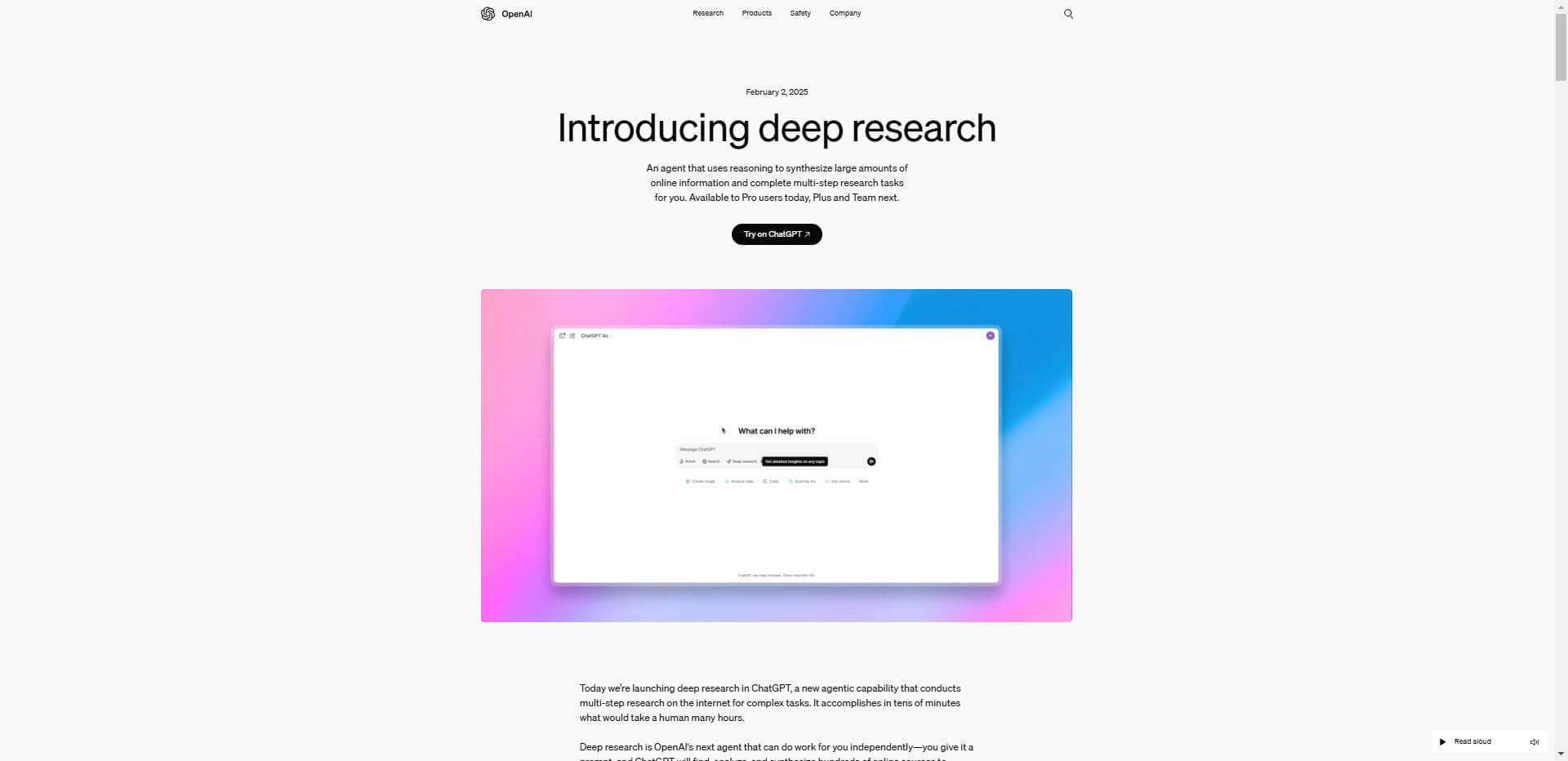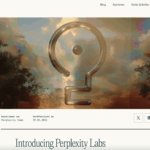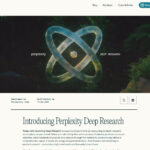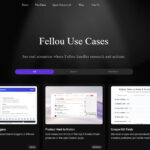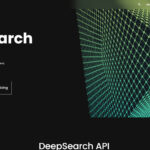The research landscape is being redefined with the introduction of deep research through OpenAI. This innovative tool could fundamentally change the way we analyze complex information and create reports.
A detailed look at deep research
With “Deep Research”, OpenAI offers a powerful AI feature within ChatGPT that has been specially developed for complex, multi-level searches. While classic AI-powered search approaches provide quick, concise answers, Deep Research impresses with its ability to create in-depth and well-documented reports with clear citations. It uses the advanced OpenAI o3 reasoning model and accesses data from publicly available web sources. Of particular note is the ability to upload files or images, whereupon the AI performs a comprehensive analysis over a period of 5 to 30 minutes.
The range of uses is broad: Deep Research is used by financial, scientific and legal experts, but also by academic researchers and even consumers who need targeted, in-depth information. The ability to answer specific niche questions is what makes the technology so unique.
Differences to traditional search
While classic AI search tools, such as those implemented in ChatGPT, rely on real-time answers in plain text, Deep Research is optimized for more extended analysis. This means that the AI not only generates answers, but also reveals the factors behind the results clearly and transparently in report form. The actual integration of sources-a feature often lacking in traditional search methods-allows users to verify the origin of each piece of information.
The approach thus fills an important gap in professions or scenarios where reliability and source clarity are top priorities. This distinguishes Deep Research from competing tools, which are generally designed to provide quick guidance and short answers.
Implications and challenges
The introduction of deep research has exciting implications for industries such as science, public policy and finance. The ability of AI to produce sophisticated reports could dramatically improve both the way these sectors work and their efficiency. This could potentially set new standards for machine intelligence in solving complex problems. At the same time, reliance on public web sources raises questions about bias, data accuracy and ethical challenges, especially considering the data landscape in areas with limited access.
However, geographically limited access to deep research is a notable limitation in early market adoption. It will be interesting to see how OpenAI deals with this and whether markets such as the European Union can be tapped into in the short term.
The most important facts about the update
- Flexibility and use: The ability to upload images, PDFs and even files for analysis opens up new horizons for data-intensive work processes.
- Availability: Currently, Deep Research is only available for Pro users in selected regions; however, an expansion is expected.
- Areas for optimization: Lack of use of private resources and geographic limitation remain challenges that should be addressed for full utilization.
- Possible applications: An interesting addition is the planned use of visualizations, which will be introduced in later versions to make reports even more vivid.
The tool could revolutionize professional work and offers potential that goes beyond conventional search options. The integrated focus on traceability and quality of sources offers security and builds long-term trust in AI-supported research.
Source: OpenAI

